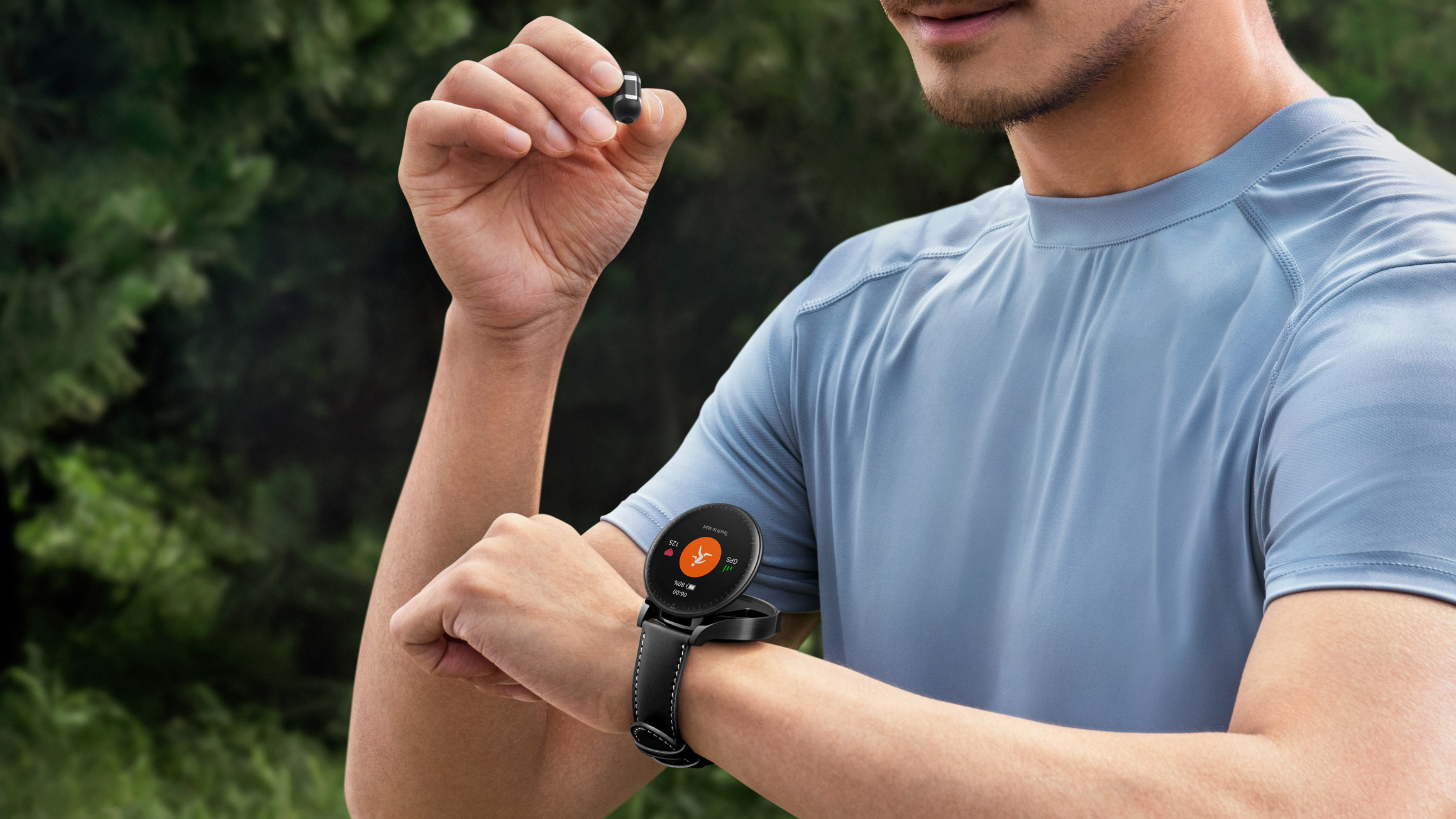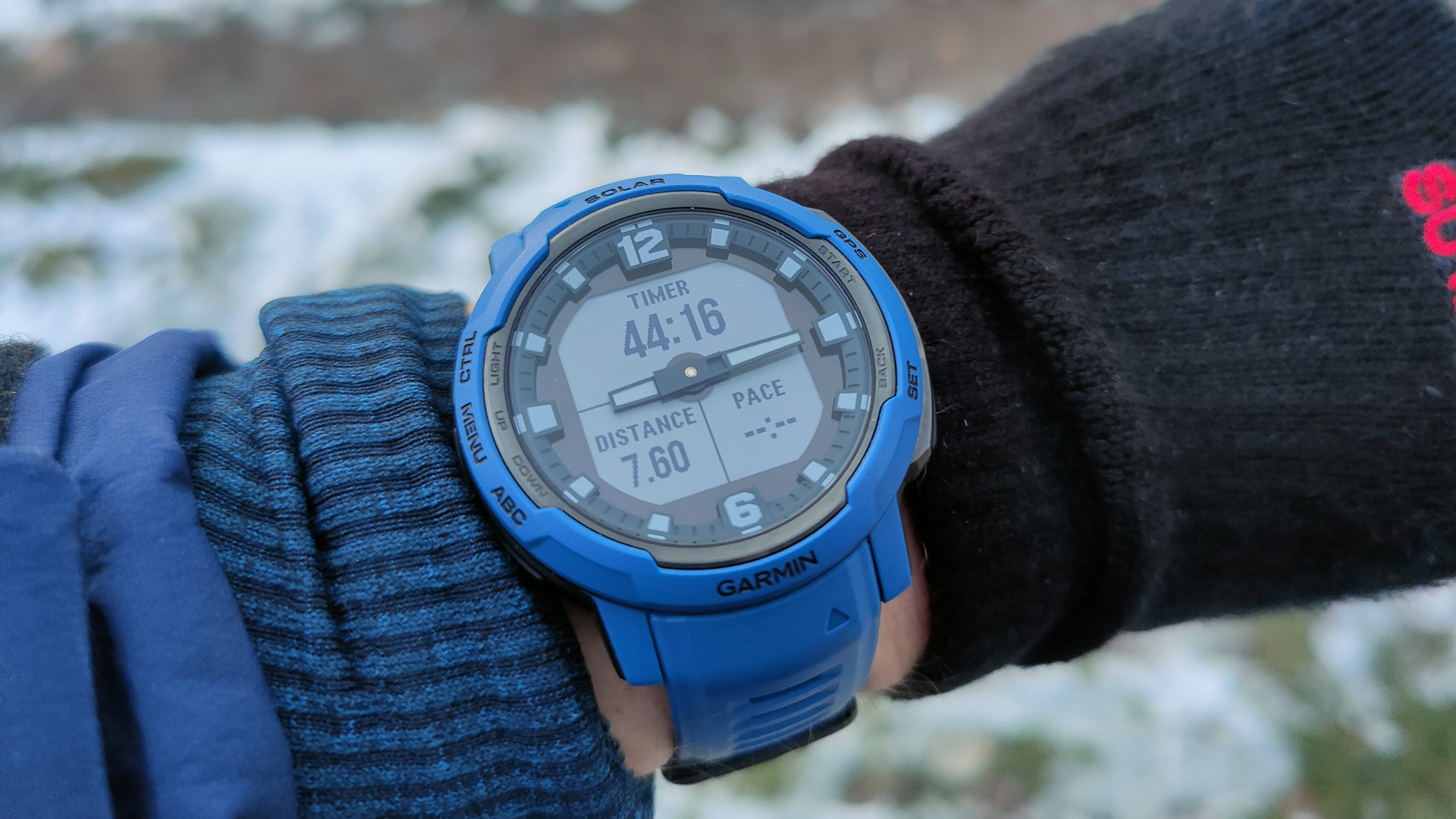Apple should copy Huawei and Garmin and make its next watch really weird
Weird smartwatch gadgets are cool again

At the time of writing, the pre-orders for the Huawei Watch Buds have just gone live. This innovative (some might say gimmicky) watch flips up like a pocket watch to reveal a tiny set of in-ear true wireless buds. Having not tested it yet, I’m not sure whether the watch, or the buds for that matter, are actually of sufficient quality to go toe-to-toe with some of the best smartwatches and best wireless earbuds out there. But I am sure that it’s a weird, inherently physical gadget, and I absolutely love the idea.
I’ve been reviewing smartwatches for a while now, and over the last six months, I’ve noticed a slew of devices from well-established brands getting a bit more experimental. The first time Huawei struck, it was with the Huawei Watch D, which I reviewed as an ugly, boxy but high-quality smartwatch, with its main USP – the band, which held a small inflatable blood pressure cuff for more accurate results than an approximation from an LED sensor – being an absolutely wonderful addition.
Rather than a new sensor or a new app, it was an inherently physical innovation: you strap it on your wrist, you feel the gadget inflate and tighten, and you get a blood pressure readout at the end. It was something you wanted to show your friends, which I’m convinced is why the blood pressure section of the app had an easily-accessible “guest mode”, so you can strap it on their wrist and they can feel it for themselves.
The Huawei Watch Buds look like more of the same. It’s something physical and interesting that you can get excited about, a piece of unusual hardware rather than an ethereal app-based feature that exists somewhere in the watch’s digital ecosystem. I’m looking forward to testing it.
But Huawei isn’t the only smartwatch maker that’s trying new things: the Garmin Instinct Crossover also dropped into my lap in December. A Garmin Instinct 2 with physical, analog hands sat on top of a screen. The watch uses its satellite connection to always determine the correct time. When you need the smart features, you press a button on the watch and the hands rotate so they’re out of the way of the info presented on the screen. Exit the screen, and the hands whirr back to the correct position.

It’s a neat trick, and although novel, it’s one I didn’t get tired of during my time with the watch. I love the look of analog watches like Casio G-Shocks anyway, so finding a hybrid adventure watch that worked was awesome. Garmin’s trying the concept a second time this year for the lifestyle crowd with the slightly more stylish, less outdoorsy Vivomove Trend, although without a screen.
Screenless hybrid watches are gathering pace, as more and more people are sick of being connected and staring at their phones, laptops, and TVs 24/7. It’s a sign watches are moving beyond fitness into the less easy-to-grasp “wellness” category. The Withings Scanwatch Horizon came out last year, and this year’s CES was chock-full of screenless health tech, with smart bands designed to be clipped to analog watches and smartwatches with gemstone faces instead of screens, like a WHOOP band. It’s an emerging trend.
Sign up for breaking news, reviews, opinion, top tech deals, and more.
All these deviations from the common-or-garden smartwatch show the same spirit of innovation as very early mobile phones, when you’d get interesting, strange devices like the gaming-focused Nokia N-Gage and the Blackberry with its tiny QWERTY keyboard. Despite the pioneering spirit of these devices, I’m sure some of these smartwatch inventions, like the N-Gage, will be relegated to an interesting historical footnote, but it’s making me excited about wearable tech again.

You know what’s not exciting? Incremental updates that change one or two small features and leave the rest of the device untouched from last year. I’m looking at you, Apple. The Apple Watch Series 6, 7, and 8 have all been incredibly iterative, with small tweaks to its existing tech but changing incredibly little with each go-round. When you’re the top dog, you’re able to sit back and let everyone else make the mistakes, adopting the strategies that work and, in many cases, making them better. If the Watch D catches on, expect Apple’s watchOS 10 or 11 to come with a blood pressure app and a similar cuff strap (sold separately, of course).
This year, to its credit, Apple did debut the brand new Apple Watch Ultra, a hyper-tough rugged adventure watch with stacks of new features, including a brand new action button designed to be operated with gloves, an ear-splittingly loud siren for attracting attention in remote climes, and a fully-operational dive computer. That’s innovation, albeit following the general trend of rugged watches doing exceedingly well. After COVID kept us all inside, fitness fans were clamoring for the great outdoors.
But with the rumor mill already churning about an Ultra 2, it’s unlikely Apple’s going to do anything brave with a new release anytime soon, which is a bit of a shame - imagine the furor if the Apple Watch Series 9 had a face which flipped up like a pocket-watch!

Matt is TechRadar's expert on all things fitness, wellness and wearable tech.
A former staffer at Men's Health, he holds a Master's Degree in journalism from Cardiff and has written for brands like Runner's World, Women's Health, Men's Fitness, LiveScience and Fit&Well on everything fitness tech, exercise, nutrition and mental wellbeing.
Matt's a keen runner, ex-kickboxer, not averse to the odd yoga flow, and insists everyone should stretch every morning. When he’s not training or writing about health and fitness, he can be found reading doorstop-thick fantasy books with lots of fictional maps in them.